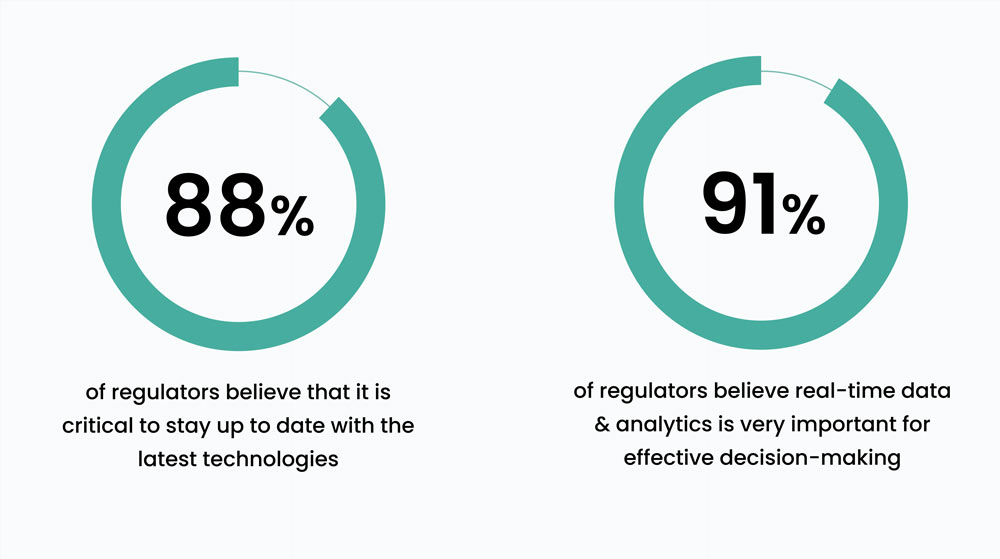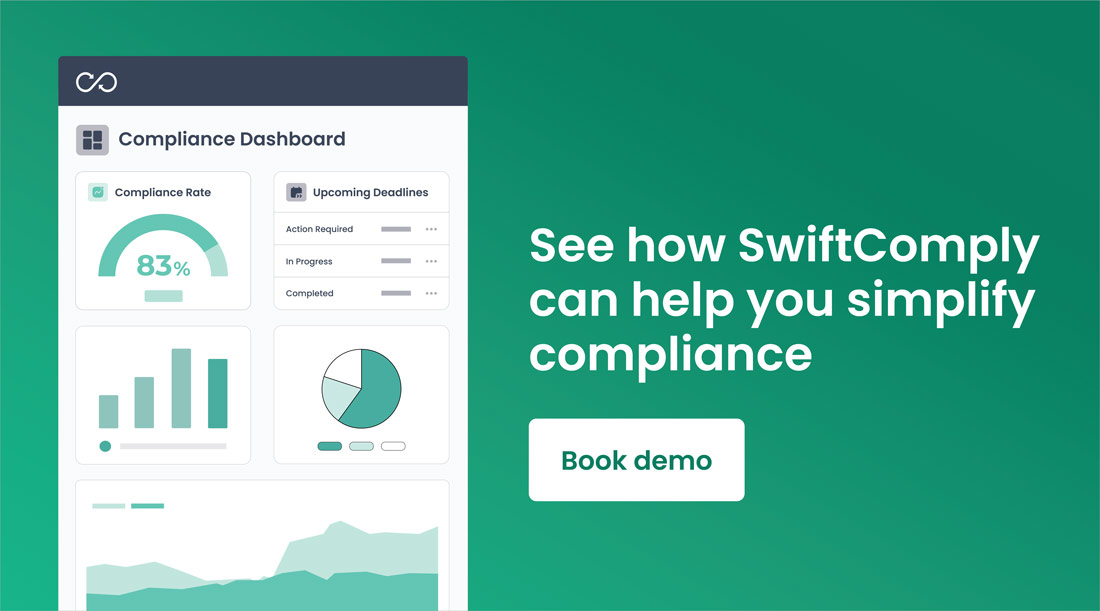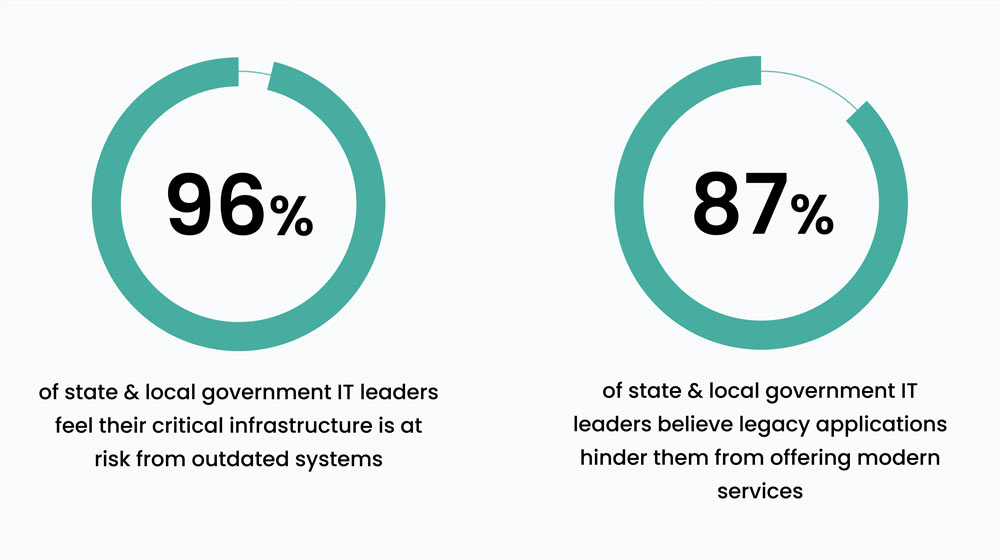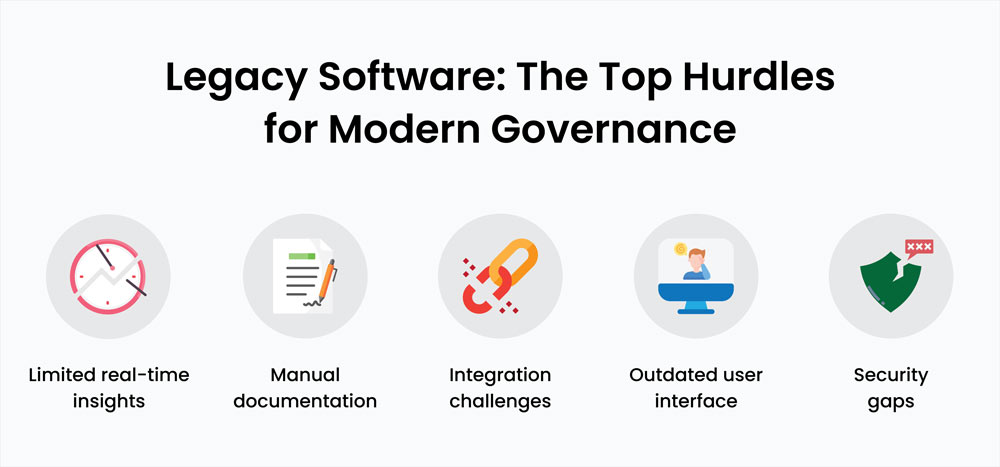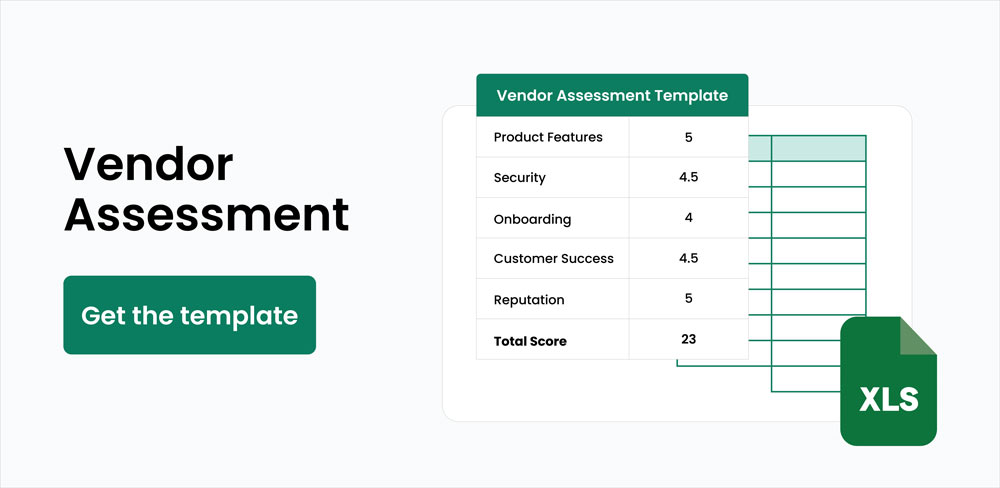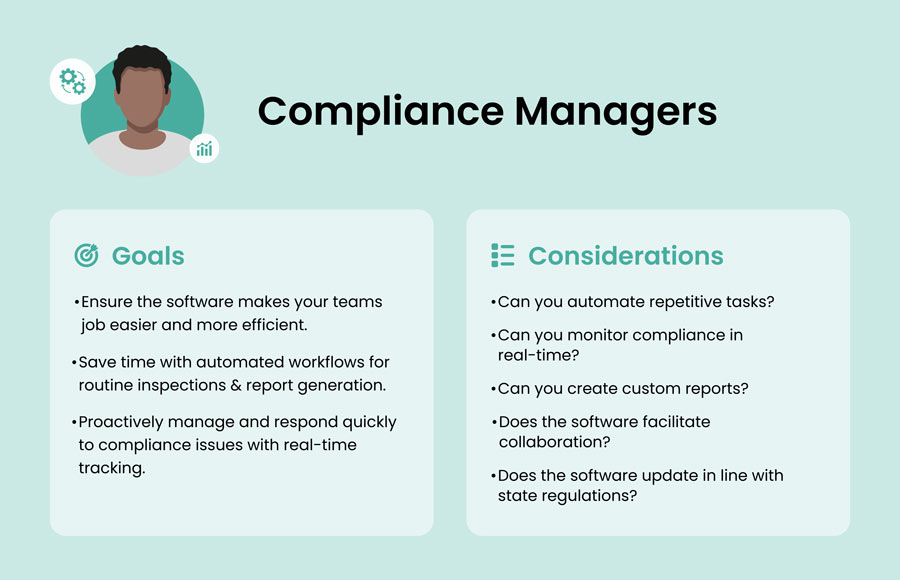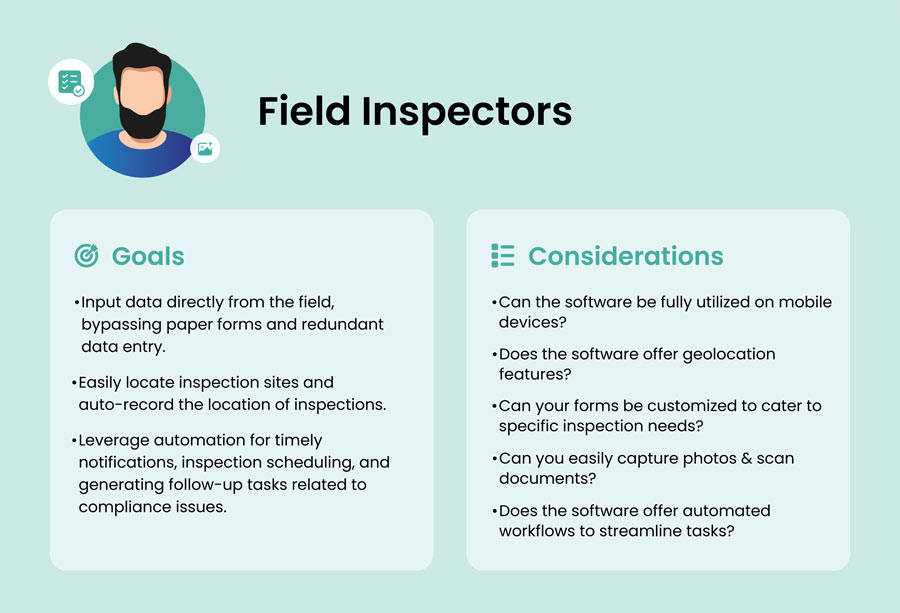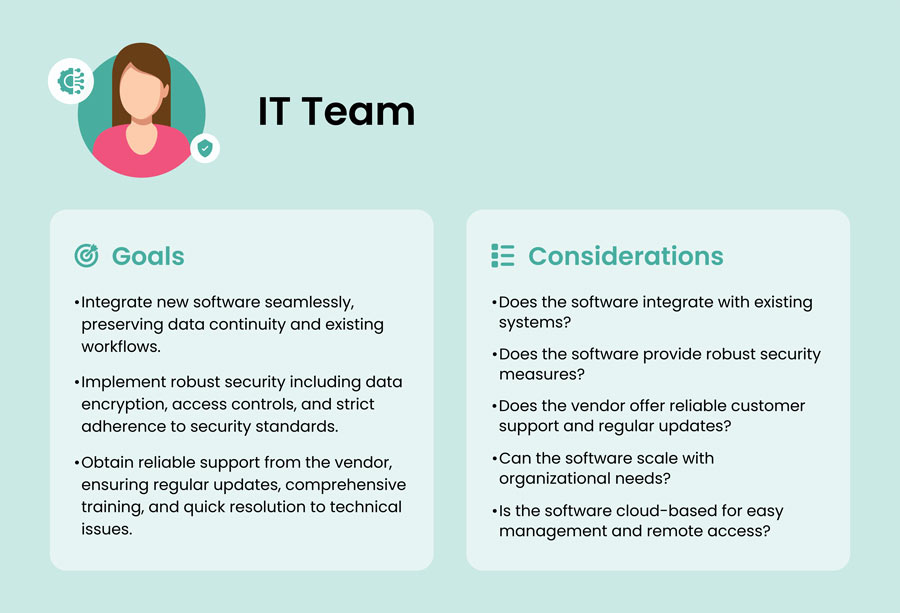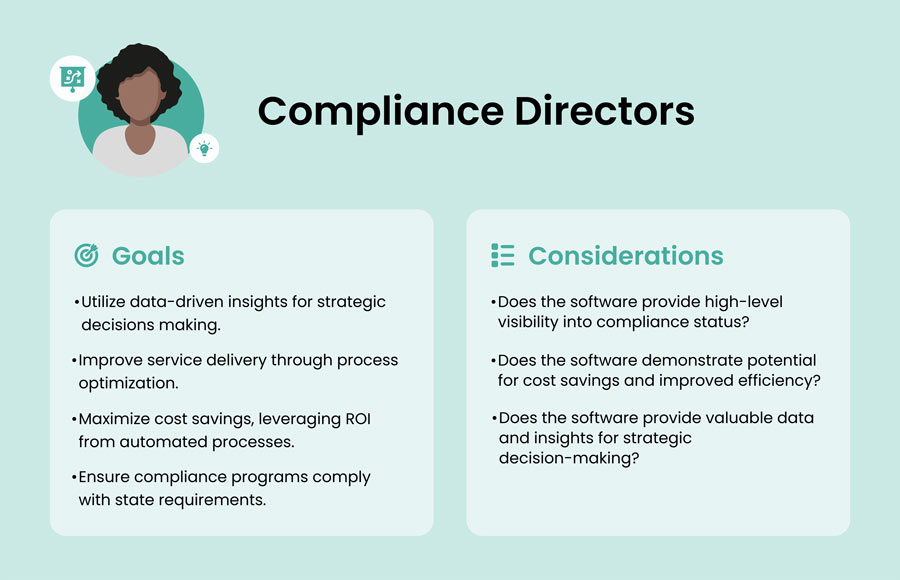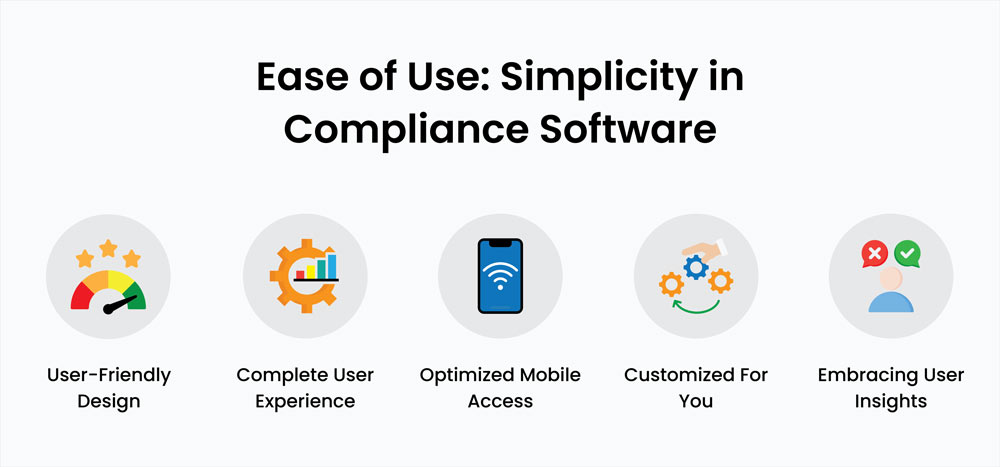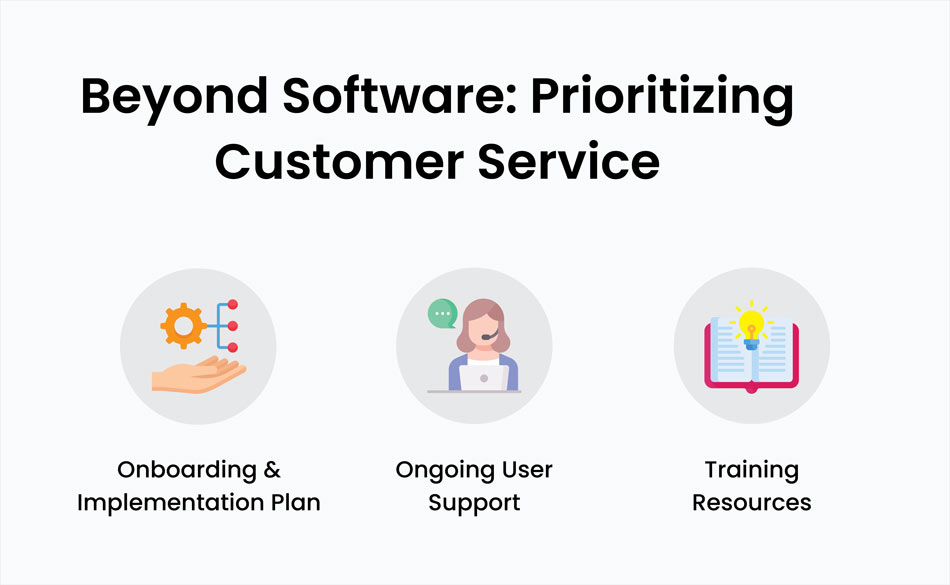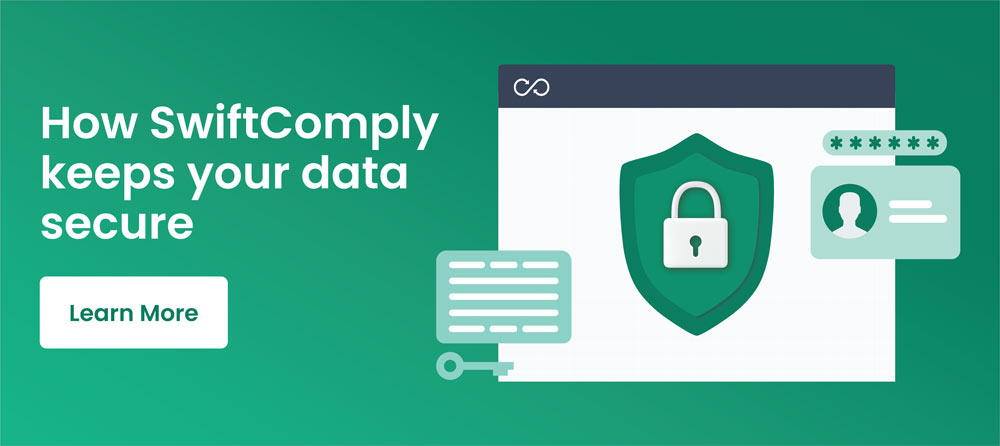Your Guide to Modern Compliance Management Software in 2024
Everything you need to know about finding and evaluating the right compliance management solution for your program.
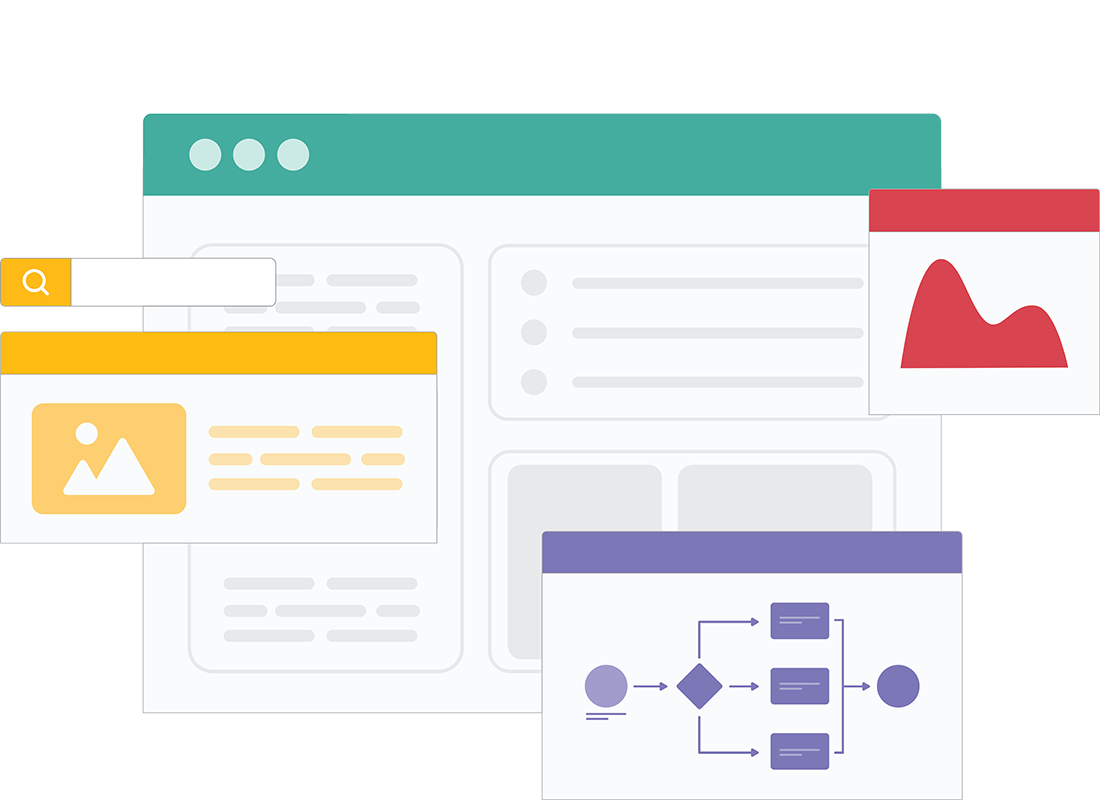
The role of a local government regulator is becoming more and more demanding. New state regulations, growing environmental issues, and larger populations are only the tip of the iceberg. Add to this the challenge of balancing a lack of resources and outdated systems, and it can feel like an uphill battle.
Embracing Digital Transformation
Modern compliance management software is designed to help compliance teams overcome these issues. Yet, many teams continue to rely on old paper-based systems, leading to inefficiencies, errors, and a lack of real-time insight into compliance issues.
It’s clear that transitioning to a modern compliance management system is no longer a luxury – it’s a necessity.
In fact, in a recent poll we conducted with over 100 of our customers, 88% stated that it was critical for regulators to stay up to date with the latest technologies. While 91% responded that access to real-time data and analytics is very important for effective decision-making.
The Power of Modern Compliance Software
Modern compliance software can be a game-changer for your work. It can streamline workflows, enhance data accuracy, and provide real-time compliance tracking. The end result is a more efficient program and higher compliance rates.
However, choosing the right software is easier said than done. With many vendors offering compliance management solutions, it can be challenging to know where to start.
And making the wrong choice can significantly impact your team’s ability to do their job effectively.
The Purpose of this Guide:
That’s where this guide comes in. Our goal is to break down the procurement process into a step-by-step roadmap. Providing you with an overview of what to look for in modern compliance systems and how to evaluate potential vendors. We’ll also touch on how you can overcome resistance to change within your organization.
By the end of this guide, you’ll have the knowledge and insights you need to choose the perfect solution for your program. Whether you are just starting your digital transformation journey or looking to upgrade your current cloud system, we’re here to help you every step of the way.
Table of contents
See SwiftComply in action
Chapter 1
Bridging the Compliance Gap
If you’ve found that your old system isn’t cutting it anymore, you’re definitely not alone.
These old systems, while familiar, often fall short when it comes to adaptability and efficiency. Two elements that are critical to any team looking to manage a modern compliance program.
A recent study by MeriTalk revealed that a whopping 96% of state and local government IT decision-makers believe that their critical infrastructures is at risk due to outdated systems. Not only that but 87% report that these legacy applications are holding them back from delivering modern services.
Even if you’ve made the jump from an on-premise system to a cloud platform, it’s just as important that the platform is customized to meet the specific needs of your program.
Challenges with Legacy Systems
As we have already laid out, legacy systems can be a real pain. They’re often rigid and complex; updating them can feel like a Herculean task. They’re missing crucial features that a modern compliance program simply cannot do without.
Manual data entry, for example, is a common feature of legacy systems, and it’s a major stumbling block for any compliance team. It takes up valuable time that could be better spent on strategic tasks.
Not only that, but a simple typo can lead to incorrect data, which can have severe consequences for compliance.
We have worked with countless compliance programs whose processes went something like this.
The inspectors filled out paper-based forms during the inspections. They then return to the office to enter the data into a computer system. The process was time-consuming and did not happen all at once. And it was not uncommon for data entry to fall behind during busy periods.
As a result, the rest of the compliance team did not know that there was a violation until weeks or even months after the initial inspection. They then had to manually follow up on any compliance issues. It was a slow process, prone to errors, and often caused delays in resolving compliance issues.
How automated workflows can help:
Now, picture this process with automated workflows in a modern compliance system. The software takes care of scheduling inspections at set intervals. Inspectors can input data straight into the system via a mobile device during the inspection, reducing errors and cutting out the need for data entry back at the office.
If a compliance issue pops up, the system automatically alerts the compliance manager and even sets up a follow-up task. This means compliance issues get sorted out quickly, keeping your compliance rates high.
And most importantly, keeping your community and the environment safe.
Reliance on Paper-Based Processes
Paper-based processes have issues of their own. Not only do they hamper efficiency – they also have a negative impact on the environment. Significant drawbacks include the need for physical storage, the difficulty in searching and updating records, and the risk of loss or damage.
Cloud-based systems, on the other hand, improve reliability through secure data storage, automatic backups, and disaster recovery solutions. They also allow you to do more with your data – making your operations more effective and sustainable.
Chapter 2
Identifying the Right Solution for Your Program
When it comes to choosing the right compliance management software, you’ve got to think about the unique needs of everyone within your organization. It’s all about digging into the specific features and capabilities that each role might need.
Here’s a detailed breakdown of the key features different functions might be looking for when evaluating a potential solution.
Compliance Managers
As a compliance manager, you need software that’s going to make your job easier and more efficient without compromising on the quality of your work.
Workflow Automation: Automates repetitive tasks, streamlines workflows, and improves efficiency. Think about how much time you could save if routine inspections or report generation were automated. Plus, it reduces the risk of human error.
Real-Time Compliance Tracking: Monitors compliance issues in real-time, allowing for proactive management and quick responses. Imagine, for example, if a business fails an inspection, the software could alert you right away, letting you take action immediately.
Reporting Capabilities: Provides detailed and customizable reports to help you analyze data, identify trends, and make informed decisions. For example, you could instantly generate a report showing compliance rates over time to identify areas needing improvement.
Regulatory Updates: Keeps up with evolving regulations and updates the system accordingly. This ensures that you and your team are always working with the most current state requirements.
Collaboration Tools: Facilitates communication and collaboration across your compliance network. For example, the software could let you share notes, assign tasks, and update statuses.
Key Considerations:
- Does the software automate repetitive tasks?
- Can the software monitor compliance issues in real-time?
- Does the software provide detailed and customizable reports?
- Does the software keep up with changing state regulations?
- Does the software facilitate communication and collaboration?
Field Inspectors
Field inspectors are the backbone of compliance programs, and they need a software solution that supports them in their day-to-day tasks.
Mobile Accessibility: The software should be fully functional on mobile devices, allowing inspectors to access and input data on the go. This means they can enter inspection data directly into the system while on-site, eliminating the need for paper forms or later data entry.
Geolocation Features: Geolocation features can help inspectors locate inspection sites and can automatically record the location of inspections. This can save them time and provide valuable spatial data for analysis.
Customizable Forms: The software should allow for customizable forms that can be tailored to specific inspection needs. This flexibility can make data collection more efficient and relevant.
Photo and Document Capture: Inspectors often need to capture visual evidence during inspections. The software should allow them to easily take photos or scan documents using their mobile device and attach these directly to the inspection record.
Automated Workflows: Automated workflows can streamline tasks. For example, the software could automatically schedule their inspections, create to-do lists, and even generate follow-up tasks if a compliance issue is identified.
Key Considerations:
- Can the software be fully accessed and utilized on mobile devices?
- Does the software offer geolocation features?
- Can the forms be customized to cater to specific inspection needs?
- Does the software allow inspectors to easily capture photos or scan documents?
- Does the software offer automated workflows to streamline tasks such as scheduling inspections?
IT Team
When it comes to your IT team, they need a secure software solution that’s going to integrate smoothly with existing systems, keeping data continuity and workflows intact.
Integration Capabilities: Integrates seamlessly with existing systems to preserve data continuity and existing workflows. For instance, integrating with your GIS system.
Security: Provides robust security measures, including data encryption, access controls, and compliance with security standards.
Vendor Support: Offers reliable customer support, regular updates, and comprehensive training to ensure smooth implementation and ongoing operation. If a technical issue pops up, your IT team will need quick and effective support from the vendor.
Scalability: The software should be able to scale with your organization’s needs and adapt to changes in the regulatory environment. This makes it a sustainable solution for the long term.
Cloud-Based Architecture: A cloud-based system eliminates the need for on-premise infrastructure, making it easier to manage and maintain. Plus, it allows for remote access, which is increasingly important in today’s work environment.
Key Considerations:
- Does the software integrate with your existing systems?
- Does the software provide robust security measures?
- Does the vendor offer reliable customer support and regular updates?
- Can the software scale with your organization’s needs?
- Is the software cloud-based for easy management and remote access?
Leadership (Directors, Coordinators)
Compliance leaders need a bird’s eye view of everything that’s going on.
Data-Driven Decision Making: Modern compliance software can provide valuable data and insights to guide strategic decisions. For example, data on compliance rates, inspection results, and enforcement actions can help identify trends, risks, and opportunities.
ROI and Cost Effectiveness: Demonstrates potential to deliver cost savings, improve efficiency, and provide a return on investment. Automating manual processes can lead to significant labor cost savings.
Scalability: It’s important to consider the scalability of the software, ensuring it can accommodate changes as the program grows or regulations evolve.
Vendor Reputation: Leadership will be interested in the vendor’s reputation and customer reviews. This can provide assurance of the vendor’s reliability and the effectiveness of their software.
Key Considerations:
- Does the software provide high-level visibility into compliance status?
- Does the software demonstrate potential for cost savings and improved efficiency?
- Does the software provide valuable data and insights for strategic decision-making?
Chapter 3
Ease of Use: Simplicity in Compliance Software
The user-friendliness of a software solution can make a significant difference in its adoption and effectiveness. A well-designed, intuitive interface will reduce the learning curve and increase your teams’ productivity.
This is particularly important for non-technical users who may not be comfortable with complex software systems.
User-Friendly Design
A user-friendly design is all about being intuitive and easy to navigate. The information should be presented in a clear and organized way, with navigation and workflows that make sense.
The software should also include handy features like filter options and user guides to make things even easier. A user-friendly design will make it much easier for your team to adapt to the software. And it will make using the software a more enjoyable experience.
Key Considerations:
- Is the design intuitive and easy to navigate?
- Does the software present information in a clear and organized manner?
- Are there handy features like filter options and user guides?
Complete User Experience
A top-notch user experience isn’t just about a friendly design – it’s about the whole package. The best software isn’t just easy to use. It’s dependable, quick, and backed by stellar customer service. Plus, it should be flexible enough to fit your specific needs, letting you tweak dashboards, and reports to your liking.
Key Considerations:
- Is the software up to scratch when it comes to performance, reliability, and customer support?
- Can you adapt the software to fit your needs, like customizing dashboards and reports?
Optimized Mobile Access
Your colleagues in the field are often on the move, using their phones and tablets to get work done. So, it’s crucial that your compliance software works just as well on these devices as it does on a desktop computer. Being able to access and use the software no matter where they are or what device they’re using can make their work more efficient and flexible.
Key Considerations:
- Can you use the software on your phone or tablet, not just your computer?
- Can you access it wherever you are, whenever you need it?
Customized For You
When it comes to effective compliance software, the ability to tweak and tailor it to your needs makes a world of difference. This includes being able to personalize dashboards, create individual workflows, and set preferences that match your work style. By doing so, the software will be a better fit for each user’s unique needs, enhancing their experience and boosting productivity.
Key Considerations:
- Can you customize dashboards, forms, and surveys to match your specific needs?
- Does it allow you to create personal workflows that align with your program’s processes?
Embracing User Insights
It’s crucial to find a vendor that values user feedback and uses it for continuous improvement. This shows their commitment to user satisfaction and software enhancement. So, make sure to check if they have a system for gathering and acting on user feedback.
Key Considerations:
- Does the vendor have a system for collecting and acting on user feedback?
- Does the vendor provide updates or improvements based on user feedback?
- Do they stay on top of changes to regulation and adjust their software as needed?
Chapter 4
Beyond Software: Prioritizing Customer Service
Selecting the right vendor is not just about the software but also about the team that supports it. A dedicated customer success team can make a world of difference, from the initial setup and training to ongoing support and updates.
Onboarding & Implementation Plan
Unless you’re starting from scratch, implementing new software is a complex process. Especially when it comes to mapping your historical data to the new system.
A vendor with robust onboarding and implementation support can provide personalized guidance and help during this phase. They should also offer comprehensive training programs tailored to your team’s needs.
Key Considerations:
- Do they have a clear and structured implementation process?
- Will you have a dedicated account manager to guide you through this phase?
- Do they offer comprehensive training programs to quickly familiarize your team with the system?
Ongoing Support
After the software is in place, ongoing support becomes essential. It’s a given that questions and issues will come up, and a vendor with a robust customer support team will be able to address these effectively and promptly.
When choosing a vendor, look for a support team that has a deep understanding of your industry and compliance best practices. This knowledge allows them to offer personalized guidance on how to best use the software to meet your specific goals.
Key Considerations:
- Do they offer continuous technical support and guidance?
- Do they have a dedicated customer success team with industry expertise?
- How quickly does their support team respond to queries or issues?
- Is there a community forum or knowledge base for self-service support?
Training Resources
Continued learning is key to maximizing the benefits of any software. Even after the initial onboarding and training, additional learning resources can be invaluable.
These resources will help your team get the most out of the software and stay updated with new features. As such, the vendor should provide comprehensive training resources in a variety of formats.
Key Considerations:
- Do they provide a wide range of training resources, such as user manuals, video tutorials, webinars, and in-person workshops?
- Are these resources easily accessible and updated regularly?
- Are the training materials tailored to cater to different roles within your organization?
Chapter 5
Ensuring Your Data is Secure
For any government agency, the threat of cybersecurity breaches looms large. And the threat is only growing as hackers use increasingly sophisticated methods to target vulnerable systems.
But here’s the good news, cloud technology can provide more robust security features and controls than traditional on-premises environments. When it comes to protecting your sensitive compliance data, this is of the utmost importance.
Understanding the Need for Robust Security Measures
For IT and Tech team members, ensuring the chosen software has stringent security measures in place is a top priority. These measures are essential to guard against data breaches and other security threats. Here are some of the key security features you should keep in mind.
Data Encryption
Think of data encryption as your secret code. It transforms your data into an unreadable format for anyone who doesn’t possess the correct decryption key. This critical feature safeguards sensitive data, even in the event of a breach.
Features & Capabilities:
- Encryption at Rest: Your data is safely stored in an encrypted system, ensuring it cannot be read, even if an unauthorized user accesses the system. It’s like having a secret vault for your data.
- Encryption in Transit: Your data is encrypted when it is being transmitted over networks, safe from interception.
- Key Management: The system should have secure processes for managing encryption keys, including key generation, distribution, storage, and retirement.
Access Controls
Access controls enable you to manage who has access to specific information, ensuring that sensitive data is only accessible to those who genuinely need it. This feature can prevent data breaches and ensure compliance with privacy regulations.
Features & Capabilities:
- Role-Based Access Control (RBAC): Users are assigned roles, and each role has specific access permissions. This ensures that users only have access to the data and functions they need for their role.
- Audit Logs: The system should keep logs of all access and changes to data, allowing you to monitor and review access and usage.
Regular Security Updates
The vendor should regularly update their software to address emerging security threats. Regular updates demonstrate a proactive approach to security, protecting your data from the latest threats.
Features & Capabilities:
- Patch Management: The vendor should have a process for regularly updating the software to patch vulnerabilities.
- Security Advisory: The vendor should inform customers of any security issues and provide guidance on mitigating risks.
- Automatic Updates: Ideally, updates should be applied automatically to ensure that all systems are running the latest, most secure version
Compliance with Security Standards
The software should adhere to key security standards like ISO 27001 or SOC 2 Type II certifications. This demonstrates the vendor’s commitment to security and alignment with recognized best practices.
Features & Capabilities:
- Certification: The vendor should have certification from recognized bodies to prove their compliance with security standards.
- Regular Audits: The vendor’s security practices should be regularly audited by independent third parties.
- Transparency: The vendor should be transparent about their security practices and provide documentation on their compliance with security standards.
Risk and Incident Management
For the highest level of data security and integrity, it’s essential to choose a vendor with a comprehensive risk and incident management strategy in place.
Features & Capabilities:
- Risk Identification and Assessment: The software should be able to identify potential risks and implement measures to mitigate them. This proactive approach can help prevent security incidents.
- Incident Detection and Analysis: In the event of a security incident, the software should promptly detect and analyze its impact. This enables a swift response and minimizes potential damage.
- Response and Recovery: The vendor should have effective mechanisms in place to respond to incidents and recover operations quickly. This ensures minimal disruption and swift restoration of normal operations.
Chapter 6
Making the Business Case
As you start narrowing down potential vendors, building a compelling business case is crucial. You need to outline why transitioning to a new system is essential for your department to meet its compliance goals.
The growing digital transformation trend across the water industry should make this easier than ever. However, you still need to present persuasive arguments that resonate with each member of your organization’s purchasing team.
This section will outline the essential components you need to convince your colleagues that a change is necessary, including:
- Executive Summary & Objectives: A concise overview of your current situation and the objectives you aim to fulfill with a new system.
- Benefits & Limitations: An assessment of the potential advantages and possible limitations of the new system.
- Risk Assessment: An evaluation of potential risks associated with the new system and strategies for their mitigation.
- Financial Analysis: A financial breakdown, including what the new system will cost and the potential return on your investment.
- Option Identification: A detailed look at all the choices you have when it comes to vendors and systems.
Let’s dive in.
Executive Summary & Objectives
The executive summary is a concise overview highlighting what you’re trying to accomplish and why it’s important. It should also clearly state the problem with the current system and how the new solution will address it.
The objectives need to align with your program’s strategic goals and show how the new solution will contribute to achieving them.
- Problem Definition: Clearly define the problem with the current system
- Solution Proposal: State how the new solution will address the problem
- Strategic Alignment: Align the objectives with the organization’s strategic goals
Benefits & Limitations
This section should outline the new solution’s benefits. Examples include online data submission, automated workflows, and real-time compliance tracking. Be sure to list the most important benefits first when making your case.
You should also acknowledge any limitations or potential challenges and how they will be addressed.
- Highlight Benefits: List the advantages of the new solution
- Recognize Limitations: Acknowledge any potential challenges or limitations.
- Address Challenges: Detail how these challenges will be managed or mitigated.
Risk Assessment
The risk assessment covers any potential pitfalls, their consequences, and how they will be managed. This could include risks related to implementation, user adoption, or data security. Most risks are vendor specific and are significantly reduced with the right partner.
- Identify Risks: Pinpoint potential risks associated with the new solution.
- Risk Management: Outline how these risks will be managed.
Financial Analysis
The financial analysis should provide a detailed breakdown of the costs associated with transitioning to a new system. This could include costs related to implementation, training, and ongoing support.
You also want to highlight potential cost savings for labor, materials, or maintenance costs.
- Detailed Cost Breakdown: Provide a detailed breakdown of all costs associated with the implementation process.
- Expected ROI: Calculate the expected return on investment (ROI).
- Potential Cost Savings: Identify potential areas for cost savings that could be achieved through reduced labor, materials, or maintenance costs.
Option Identification
Finally, this section should present different options for the new solution, comparing their features, benefits, costs, and risks. This will help stakeholders make an informed decision.
- Present Options: Present different options for the new solution
- Compare: Compare their features, benefits, costs, and risks
- Educate: Help stakeholders make an informed decision
Chapter 7
Evaluating Potential Vendors
Plenty of regulatory compliance providers offer solutions to different use cases. Here are some of the most important factors to keep in mind when choosing the right partner for your organization.
Market Credibility
The vendor’s reputation and credibility in the market are crucial factors to consider. A vendor with a strong track record and positive customer testimonials is more likely to provide a reliable, high-quality solution.
Key Considerations:
- Does the vendor have a strong reputation in the market?
- What do customer reviews and testimonials say about the vendor?
- Has the vendor received any industry awards or recognition?
Industry Expertise
The vendor’s experience in the industry is a vital factor to consider. A deep understanding of the industry, its challenges, and its nuances can provide a solution that is more tailored to your needs. Moreover, working with a vendor that has real-world experience can provide valuable insights and best practices.
Key Considerations:
- Does the vendor have extensive experience in the water/wastewater compliance industry?
- Can the vendor provide case studies or examples of similar organizations they have worked with?
- Does the vendor’s team include people with direct experience in the industry?
Specialized Compliance Solutions
It’s crucial to find a system that has been specifically built to solve the challenges you face day in and day out. Whether you’re dealing with water, wastewater, or stormwater regulations, you need a system built with your needs in mind.
Of course, as things change in the world of regulatory compliance, teams from different departments will want to work together more. So, going with a vendor that offers specialized products and has plans for a more integrated solution down the line is a smart move.
Key Considerations:
Does the software specifically address the needs of your compliance vertical?
Can the software evolve into a one-size-fits-solution approach for your entire organization?
Features and Functionality
The software should meet your specific needs and be flexible enough to adapt to your processes.
Key Considerations:
- Does the software offer the features and functionality you need?
- Can it be customized to fit your processes?
- Does it support integration with other systems you use?
User-Friendliness
The software should be easy to use, even for non-technical users. A well-designed system will allow your team to get the maximum benefit from its features and capabilities.
Key Considerations:
- Is the software intuitive and easy to navigate?
- Does it provide user-friendly tools and features?
- Is it accessible on various devices, including mobile?
Support and Training
The vendor should provide robust support and training to help you get the most out of the software.
Key Considerations:
- Do they offer comprehensive training programs?
- Is there a dedicated customer support team available to assist you?
- Do they provide resources such as user guides and tutorials?
Cost
The software should be priced competitively and offer good value for money. This is particularly important for Public Works Directors and your colleagues in IT, who are often responsible for managing budgets.
Key Considerations:
- Is the software priced competitively?
- Does the pricing structure fit your budget?
- Does the software offer good value for money, considering its features and benefits?
Finding a Partner Aligned with Your Values
Choosing a vendor that shares your values and understands your mission is important. This can lead to a stronger partnership and a better understanding of your needs.
Key Considerations:
- Does the vendor understand and share your mission and values?
- Does the vendor demonstrate a commitment to customer success?
- Is the vendor’s culture and approach a good fit with your organization?
Evaluating potential vendors requires a careful analysis of their software’s features, user-friendliness, support, and cost. By considering these factors, you can be confident that you’re not only getting a great solution but partnering with people who are committed to providing you with the best possible support.

